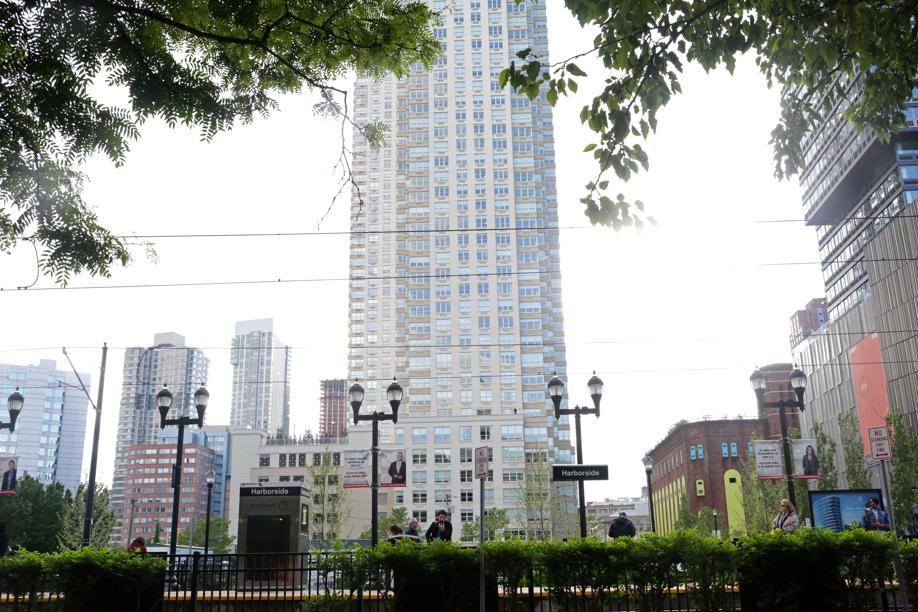
NEW YORK — Kushner Cos. engaged in a bit of creative mapmaking to qualify one of its buildings in a booming New Jersey waterfront neighborhood across from Manhattan for a federal visa-for-investment program that targets struggling areas.
E-mails obtained by The Associated Press show that the family of President Trump’s son-in-law Jared Kushner placed its 65 Bay St. building in Jersey City in a map stringing together two dozen other areas, some with high unemployment.
The map was included in a 2015 application to the EB-5 visa program that allows overseas investors to obtain US residency in exchange for investments of $500,000 or more in rural areas or those with high unemployment.
The maps are legal, and many other developers engage in the practice. But the practice is one of the reasons the EB-5 visa program has come under criticism from both Democrats and Republicans.
James Yolles, a spokesman for Kushner Cos., declined to comment.
The Kushner property is co-owned with the developer KABR Group. KABR did not respond to voice mail and e-mail requests for comment.
The special maps were reported earlier by The Washington Post.
The building at 65 Bay St. has licensed the Trump name from the president’s company and is better known as ‘‘Trump Bay Street.’’ It received millions from wealthy overseas investors through the EB-5 program.
Kushner Cos. was recently making pitches to potential EB-5 investors in China for another Jersey City property. Called One Journal Square, it is a planned 79-story two-tower complex in a struggling area of the city. The company is seeking 300 wealthy Chinese to invest a total of $150 million.
Jared Kushner’s sister, Nicole Kushner Meyer, created a stir in March after reports she had mentioned her brother, a senior adviser to Trump, in a presentation in China. Marketing materials for the event also cited the Kushner family’s ‘‘celebrity’’ status.
Kushner Cos. said Meyer’s intention was not to use the connection to the White House to lure investors. Jared Kushner stepped down as CEO of Kushner Cos. when he joined the White House. His lawyer has said that he has sold his stake in One Journal Square.
To handle the mapmaking for Trump Bay Street, Kushner Cos. turned to Evans, Carroll & Associates, an economic consultancy in Boca Raton, Fla.
On May 6, 2015, Evans e-mailed the New Jersey Department of Labor & Workforce Development, requesting that it review a proposed map stretching over two dozen census tracts. The map formed an odd shape, with some relatively low-unemployment areas separated by a few miles from high-unemployment ones.
By month’s end came New Jersey’s reply: The areas included in the map, called a Targeted Employment Area, had an overall unemployment rate of 9.8 percent — high enough to qualify for the EB-5 program.
The unemployment rate for the single census tract that includes 65 Bay St. was not mentioned in the e-mails, but has typically been much lower, according to Dave Evans of Evans, Carroll & Associates. Evans said the unemployment rate last year for the census tract that includes 65 Bay St. averaged 1.3 percent.
To qualify for EB-5 financing, a building needs to be in a Targeted Employment Area with unemployment 150 percent above the average US rate.
Critics have faulted the EB-5 program for failing to bring investment into poor communities as intended. By gerrymandering together rich geographic areas with poor ones, developers have managed to win approval for luxury projects in Manhattan, California’s Beverly Hills, and South Beach in Miami Beach.
Earlier this year, Evans, Carroll & Associates e-mailed New Jersey state officials for Kushner’s One Journal Square project, too. That proposed map encompassed far fewer census tracts, just six, and covered more struggling areas of Jersey City. The Targeted Employment Area has an average unemployment rate of 8 percent. The state agency wrote back four days later, confirming the number.
Karla Bardinas, a spokeswoman for the Department of Labor & Workforce Development, said state officials have no power over the mapmaking.
‘‘Developers propose the maps of Targeted Employment Areas and the department merely verifies if the unemployment rate in the proposed area meets the federal criteria,’’ she said in an e-mail.
The ultimate decision of whether the maps qualify, she said, lies with US Citizenship and Immigration Services.



